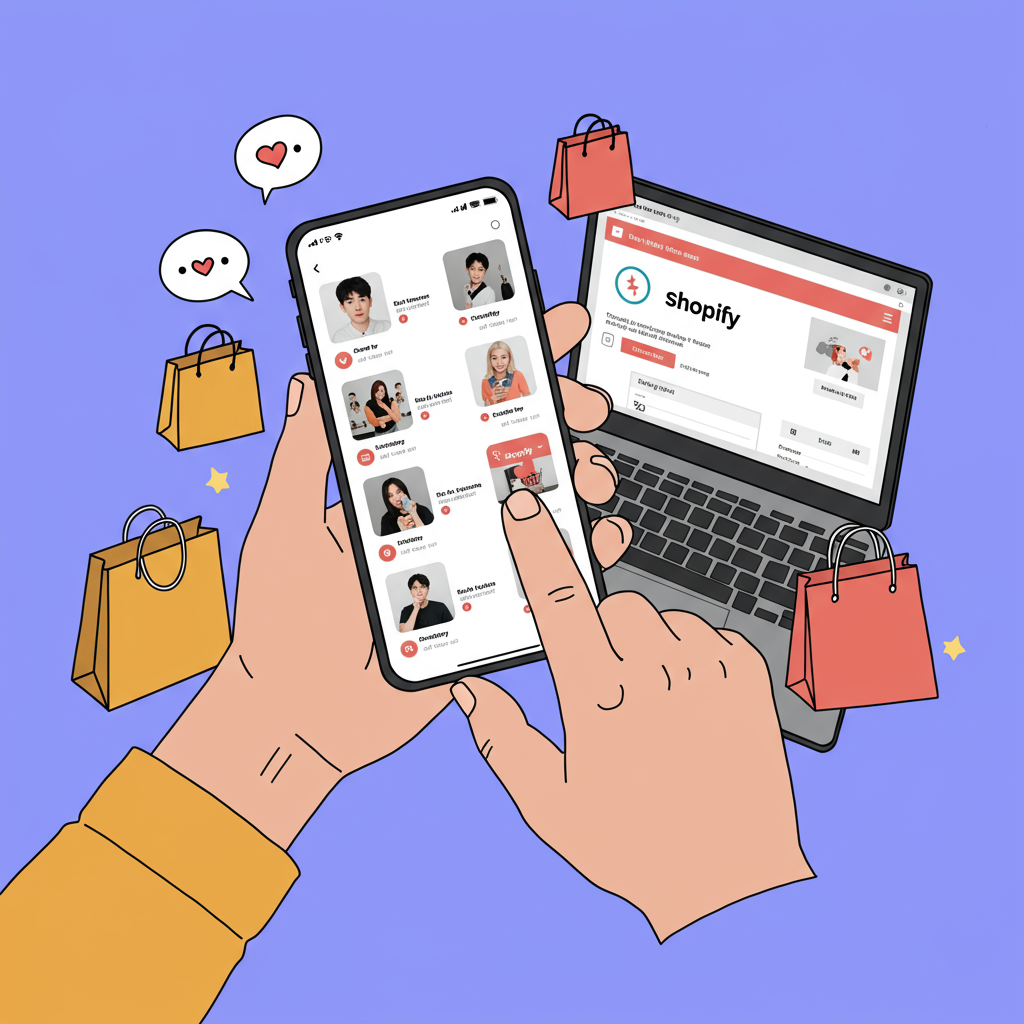My Guide to Affordable Strategies for E-commerce Success
As a Shopify merchant, I know firsthand the challenges of growing an online business. We’re constantly looking for effective ways to reach new customers, build brand awareness, and drive sales, often with limited marketing budgets.
One of the most powerful tools in today’s digital landscape is influencer marketing. It allows us to tap into established communities and leverage trusted voices to promote our products.
However, the perception often is that influencer marketing is reserved for big brands with deep pockets. I’m here to tell you that’s simply not true.
My goal with this article is to show you how your Shopify store can harness the power of influencer marketing without breaking the bank. We’ll explore practical, affordable strategies that deliver real results.
The key to budget-friendly influencer marketing lies in shifting our focus from celebrity endorsements to more accessible, yet highly effective, partnerships.
This brings us to the concept of micro-influencers. These are individuals with smaller, highly engaged followings, typically ranging from 1,000 to 100,000 followers.
What micro-influencers lack in sheer follower count, they more than make up for in authenticity and niche relevance. Their audience often trusts their recommendations implicitly.
I’ve found that micro-influencers are also significantly more affordable than their macro or celebrity counterparts, making them perfect for our budget-conscious approach.
So, how do we find these hidden gems? My preferred method starts with manual research on platforms like Instagram, TikTok, and YouTube.
I begin by searching for hashtags relevant to my products or industry. For example, if I sell eco-friendly home goods, I’d look for #sustainableliving, #ecofriendlyhome, or #zerowastelifestyle.
I then scroll through posts, looking for creators whose content aligns with my brand’s aesthetic and values. I pay close attention to their engagement rates – are people commenting, sharing, and saving their posts?
Another great tactic I use on Instagram is to look at the ‘suggested’ profiles once I find one relevant influencer. This often leads me down a rabbit hole of similar creators.
For TikTok, I spend time on the ‘For You’ page, actively engaging with content related to my niche. The algorithm will then start showing me more relevant creators.
Once I’ve identified potential partners, the next crucial step is outreach. This is where personalization is absolutely vital. I never send generic, templated messages.
Instead, I craft a message that specifically references their content, explaining why I believe their audience would genuinely appreciate my products.
I highlight how a collaboration would be mutually beneficial, focusing on the value I can offer them beyond just monetary compensation.
When it comes to negotiation, remember that cash isn’t always king, especially with micro-influencers. My primary offer is usually free products.
For many micro-influencers, receiving free products that align with their content and personal interests is a highly attractive proposition.
I make sure the product value is fair for the effort I’m asking them to put in. Sometimes, I’ll send a selection of products for them to choose from.
Beyond free products, I also consider offering affiliate commissions. This means they earn a percentage of every sale made using a unique discount code I provide them.
This performance-based model is excellent for budget control, as I only pay when sales are generated. It also incentivizes the influencer to genuinely promote my products.
I also emphasize the potential for exposure on my own Shopify store’s social media channels, tagging them and giving them credit, which can help them grow their own audience.
For long-term partnerships, I might offer exclusive access to new product launches or early bird samples, fostering a deeper relationship.
Once an agreement is reached, I provide a clear, concise campaign brief. This isn’t a rigid contract, but rather a guide outlining my expectations.
I include brand guidelines, key messages I’d like them to convey, and specific calls to action (e.g., ‘link in bio to shop’). I also specify the type of content I’m looking for (e.g., a static post, an Instagram Story, a TikTok video).
Tracking the results of these campaigns is paramount. I use Shopify’s built-in analytics to monitor referral traffic from their links.
I also implement UTM parameters on any links I provide, allowing me to see exactly which influencer drove traffic and conversions.
Monitoring the usage of unique discount codes is another straightforward way I measure direct sales attributable to each influencer.
Don’t forget to repurpose the content! I always ask for permission to share their posts on my own social media channels, giving them credit, of course. This extends the life of the content and provides valuable social proof.
Building genuine relationships is key. I make sure to thank them, provide feedback, and consider them for future collaborations. A happy influencer is a repeat influencer.
What do you think about this article? Have you tried any of these strategies for your Shopify store?
In conclusion, influencer marketing is not just for the big players. By focusing on micro-influencers, offering creative compensation, and meticulously tracking your efforts, your Shopify store can achieve significant growth.
It’s about being smart, strategic, and building authentic connections. Start small, learn from each campaign, and watch your brand flourish.
I truly believe that with these affordable strategies, your Shopify store can effectively leverage the power of influencer marketing and stand out in the competitive e-commerce landscape.






